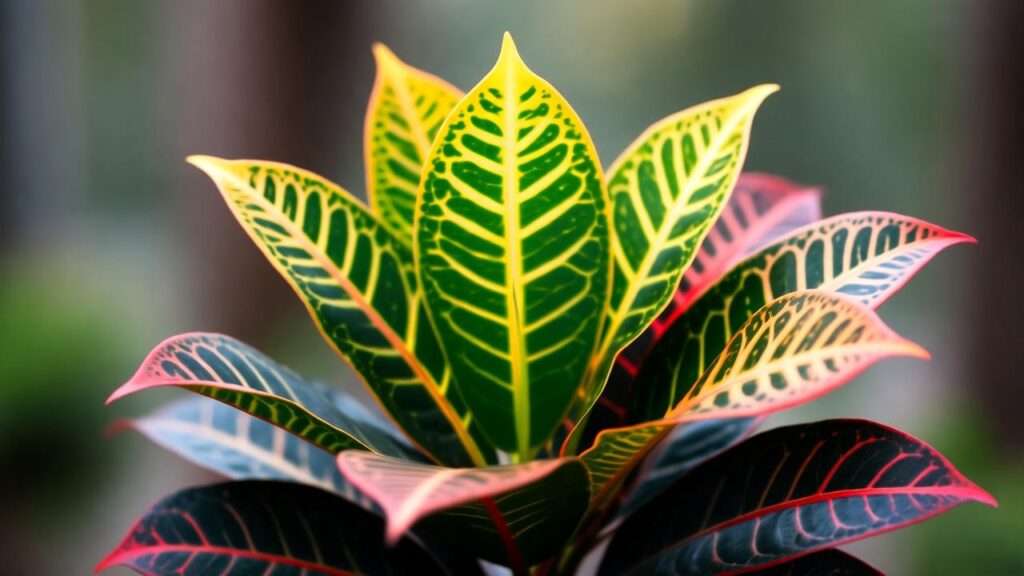Imagine filling your home with bursts of vibrant color, where glossy leaves in shades of red, yellow, orange, and green create a tropical paradise. The Croton Petra plant (Codiaeum variegatum ‘Petra’) is your ticket to this stunning display, but its beauty comes with a catch—it demands the right care to truly shine. Whether you’re a seasoned plant parent or just starting your green journey, this guide unlocks the secrets to keeping your Croton Petra thriving year-round. From light and water to humidity and pruning, we’ve got you covered with expert-backed, actionable tips to ensure your plant flourishes. Ready to transform your space with a healthy, vibrant Croton Petra? Let’s dive in! 🌈
What is a Croton Petra Plant? 🌟
Overview of the Croton Petra Plant
The Croton Petra, scientifically known as Codiaeum variegatum ‘Petra,’ is a tropical evergreen native to Southeast Asia and Oceania. Renowned for its dazzling, multicolored foliage, this plant boasts leaves in vibrant hues of red, yellow, orange, and green, often with intricate veining or patterns. Its glossy, leathery leaves make it a standout in any indoor or outdoor setting (in warm climates). As a houseplant, the Croton Petra is a favorite for its ability to add a bold, tropical flair to homes, offices, or patios. Beyond aesthetics, it’s also known for its air-purifying qualities, making it a functional and beautiful addition to your space. 🏡
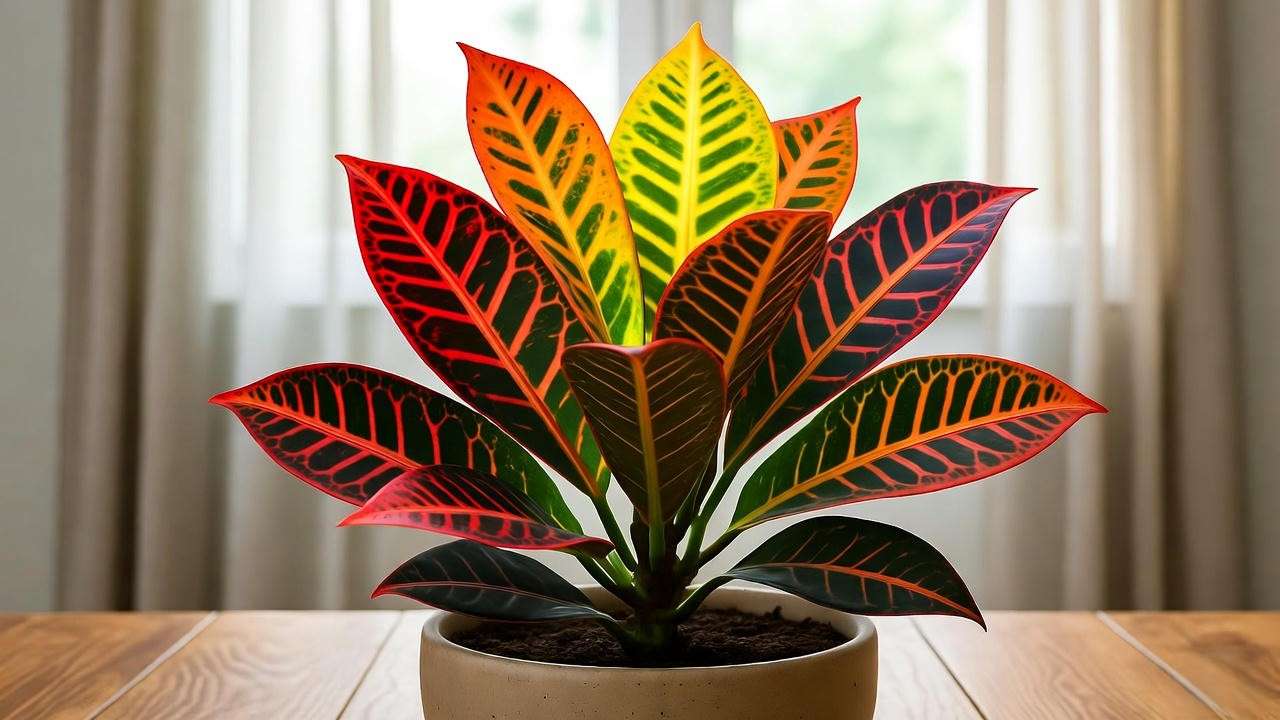
Why Choose a Croton Petra?
The Croton Petra’s versatility makes it a top choice for plant enthusiasts. It thrives indoors in pots or outdoors in USDA zones 9-11, where temperatures stay above 50°F. Its striking foliage elevates interior design, serving as a natural focal point in living rooms, offices, or even shaded garden corners. Plus, it’s a conversation starter—guests can’t help but notice its vivid colors! For those passionate about houseplants, the Croton Petra offers a rewarding challenge, blending beauty with the satisfaction of mastering its care. 🌿
Understanding Croton Petra Care Needs 🌍
Key Factors for Croton Petra Success
To keep your Croton Petra thriving, you need to mimic its native tropical environment. This means providing bright light, consistent moisture, high humidity, and warm temperatures. Think of it as bringing a slice of the jungle into your home! Each care aspect—light, water, soil, and more—plays a critical role in maintaining its vibrant foliage and overall health. By understanding these needs, you’ll set the foundation for a flourishing plant.
Common Challenges in Croton Petra Care
Croton Petras can be sensitive, and issues like leaf drop, fading colors, or pest infestations are common if care isn’t optimized. Leaf drop, for instance, often signals stress from improper light, watering, or humidity. But don’t worry—these challenges are manageable with the right knowledge. This guide breaks down each aspect of care to help you troubleshoot and prevent problems, ensuring your Croton Petra stays healthy and vibrant. 💪
Tip 1: Provide Bright, Indirect Light ☀️
Mastering Light Requirements
Light is the lifeblood of a Croton Petra’s vibrant colors. This plant thrives in bright, indirect light, which fuels its photosynthesis and keeps its foliage vivid. Place it near an east or west-facing window where it gets filtered sunlight for 6-8 hours daily. If natural light is limited, consider using a full-spectrum grow light to supplement. Avoid direct sunlight, as it can scorch the leaves, causing brown, crispy edges.
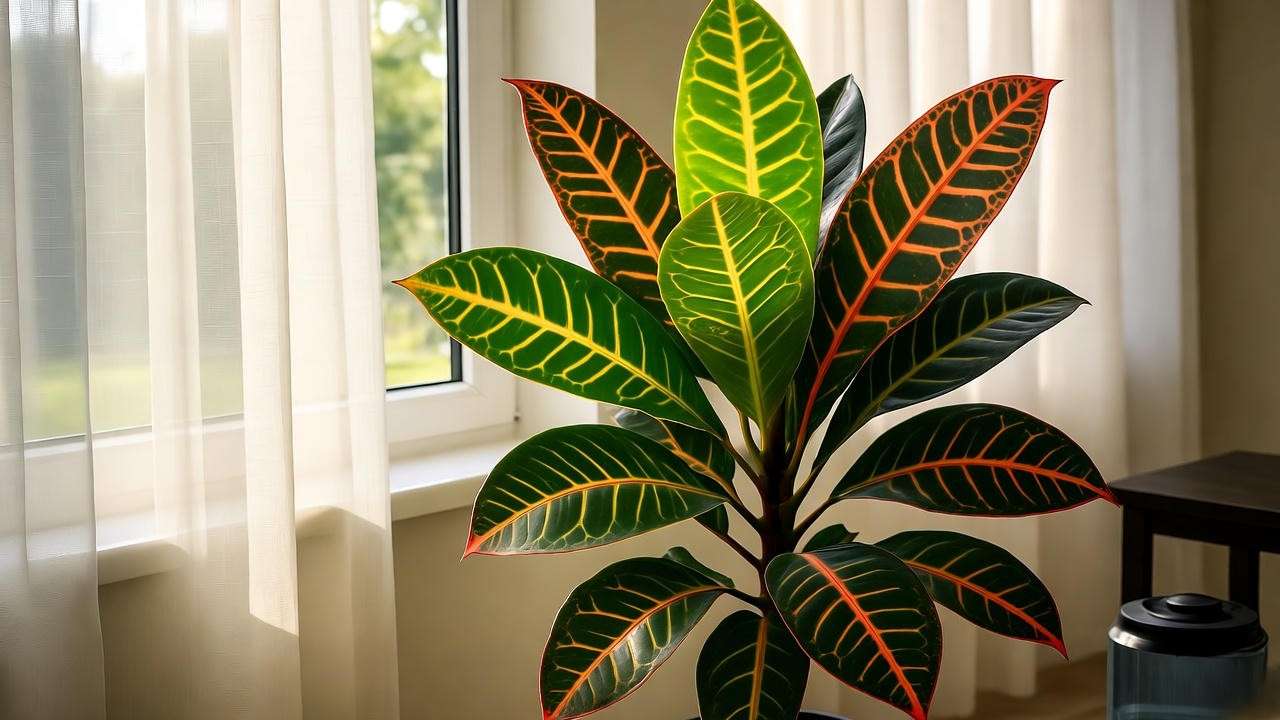
Troubleshooting Light Issues
If your Croton Petra’s leaves lose their vibrancy or turn dull green, it’s likely not getting enough light. Conversely, scorched or faded leaves indicate too much direct sun. To fix low light, move the plant closer to a window or add a grow light (aim for 1000-2000 lumens). For excessive sun, use sheer curtains to diffuse the light. Regularly rotate the plant to ensure even light exposure, promoting balanced growth. With the right light, your Croton Petra will glow like a tropical masterpiece! 🌞
Tip 2: Maintain Proper Watering Habits 💧
Watering Your Croton Petra Correctly
Watering is a balancing act for Croton Petras. They prefer consistently moist soil but hate being waterlogged. Water thoroughly when the top inch of soil feels dry, typically every 1-2 weeks, depending on your home’s conditions. Use lukewarm water and ensure excess water drains out to prevent root rot. In spring and summer, you may need to water more frequently, while in fall and winter, reduce watering as growth slows.
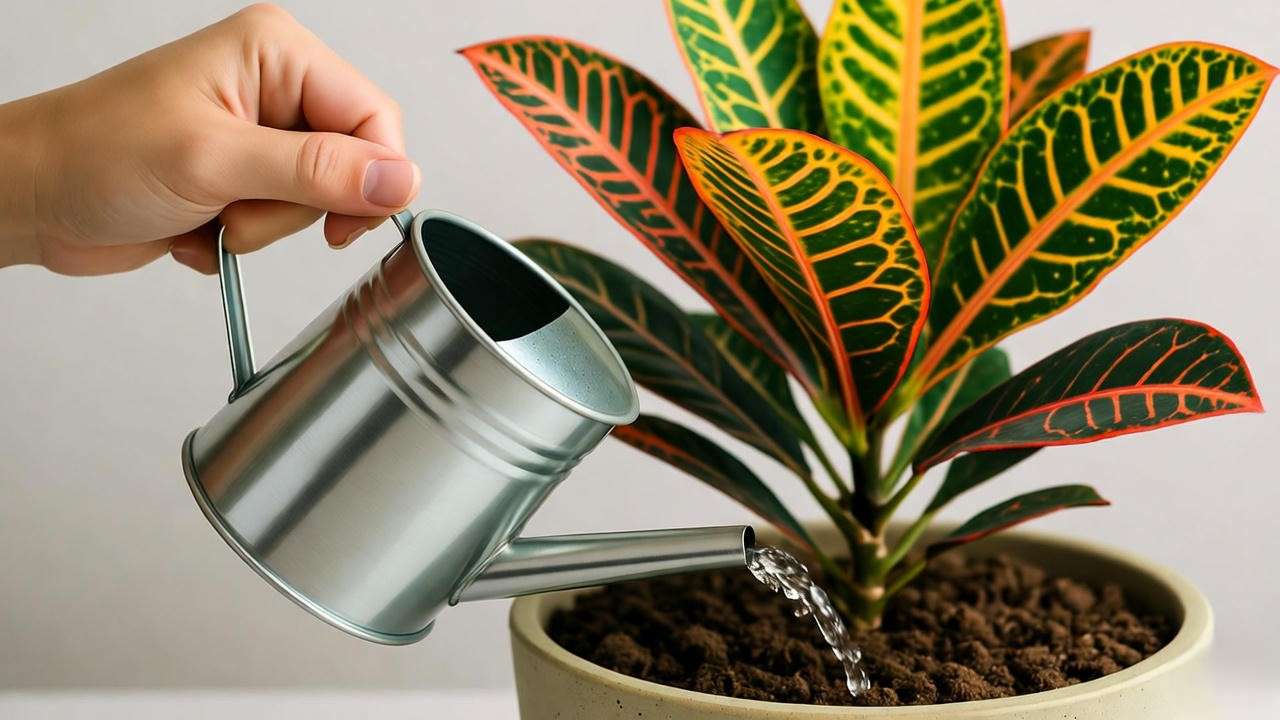
Avoiding Overwatering and Underwatering
Overwatering is a common mistake, leading to yellowing leaves or mushy roots. Underwatering, on the other hand, causes wilting or crispy leaf edges. To get it right, always check the soil’s moisture level with your finger or a moisture meter before watering. Use a well-draining potting mix (more on this later) and a pot with drainage holes to prevent water buildup. Pro tip: If you’re unsure, err on the side of underwatering—Croton Petras recover better from slight drought than soggy conditions. 💦
Tip 3: Ensure High Humidity Levels 💨
Creating a Tropical Humidity Environment
As a tropical plant, the Croton Petra craves humidity levels of 40-60%, mimicking its native rainforest habitat. Low humidity can cause leaf drop or browning tips, especially in dry climates or during winter when indoor heating reduces moisture. To boost humidity, try misting the leaves every few days, placing a pebble tray filled with water beneath the pot, or using a humidifier. Grouping your Croton Petra with other plants can also create a humid microclimate.
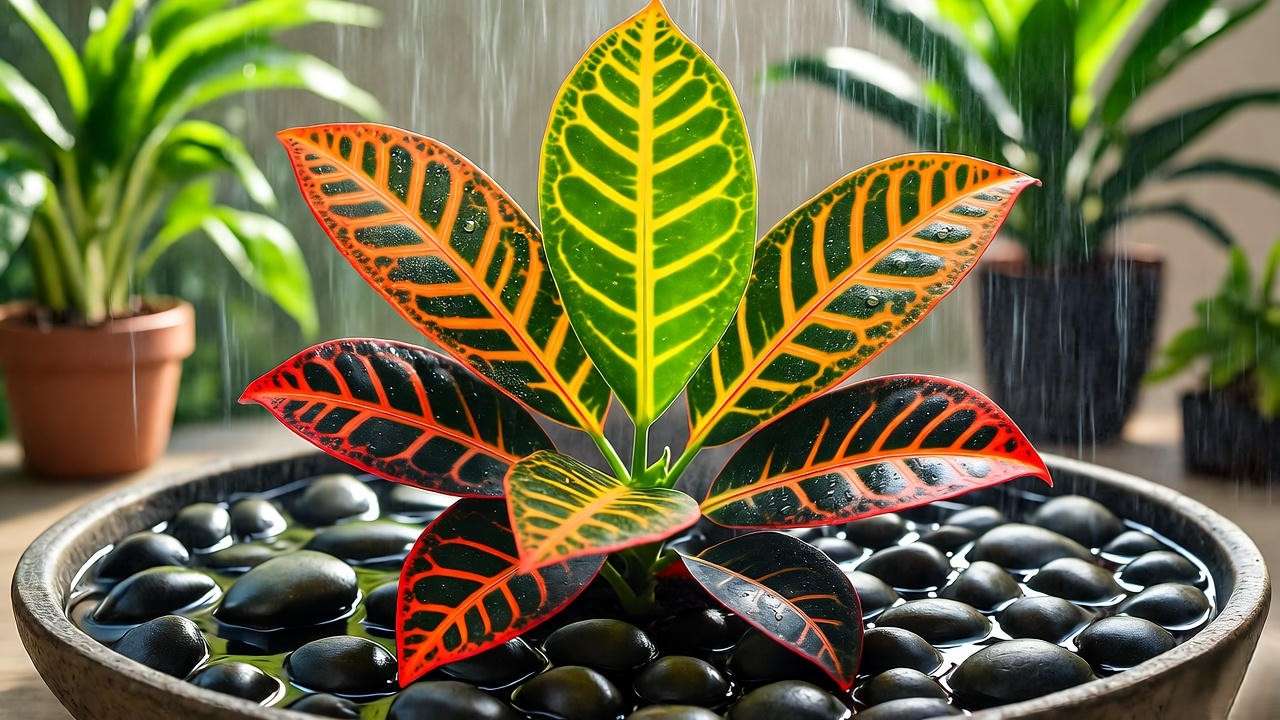
Humidity Hacks for Dry Climates
If you live in a dry area, get creative! Place a small humidifier near your plant for consistent moisture. Alternatively, set the pot on a tray of pebbles with water just below the pot’s base to avoid soaking the roots. Misting is effective but needs to be done regularly to maintain humidity. For a low-maintenance option, move your Croton Petra to a naturally humid room like a bathroom or kitchen (with adequate light). These tricks will keep your plant happy and its leaves lush! 🌬️
Tip 4: Use the Right Soil and Pot 🪴
Choosing the Best Soil and Pot
The right soil and pot are crucial for a healthy Croton Petra. Opt for a well-draining potting mix, such as a blend of peat moss, perlite, and sand, to ensure proper aeration and moisture retention. Avoid heavy, compacted soils that trap water and suffocate roots. Choose a pot with drainage holes to prevent waterlogging, and select a size that’s slightly larger than the root ball—about 1-2 inches wider in diameter—to allow room for growth.
Repotting Your Croton Petra
Repot your Croton Petra every 1-2 years or when it becomes root-bound (roots circling the pot or poking out of drainage holes). To repot, gently remove the plant, shake off old soil, and place it in a new pot with fresh potting mix. Water thoroughly after repotting and keep the plant in indirect light for a few days to reduce stress. Repotting refreshes nutrients and gives roots space to expand, promoting vigorous growth. 🌱
Tip 5: Feed with Balanced Fertilizer 🌱
Fertilizing for Optimal Growth
To keep your Croton Petra’s foliage vibrant and its growth robust, regular feeding is essential during the growing season (spring and summer). Use a balanced, water-soluble fertilizer with an NPK ratio of 10-10-10 or 20-20-20, applied every 4-6 weeks. Dilute the fertilizer to half-strength to avoid overwhelming the plant. Apply it to moist soil to ensure proper nutrient absorption and prevent root burn. During fall and winter, when growth slows, skip fertilizing to let the plant rest. This feeding schedule supports lush, colorful leaves and overall plant vigor. 🌿
Avoiding Over-Fertilization
Over-fertilizing can harm your Croton Petra, causing leaf burn, salt buildup in the soil, or stunted growth. Signs include white crust on the soil surface or browning leaf edges. To prevent this, always follow the fertilizer’s instructions and err on the side of under-fertilizing. If you suspect over-fertilization, flush the soil with water to remove excess salts, ensuring the pot drains well. Pro tip: If you’re new to plant care, start with a liquid fertilizer for easier control and consistent results. Your Croton Petra will thank you with vibrant growth! 🌟
Tip 6: Protect from Pests and Diseases 🐛
Keeping Pests and Diseases at Bay
Croton Petras can attract common houseplant pests like spider mites, mealybugs, and scale, especially in dry or poorly ventilated conditions. Diseases like root rot, caused by overwatering, are also a risk. Prevention is key: maintain proper care practices, such as adequate humidity, good air circulation, and regular leaf cleaning with a damp cloth. Inspect your plant weekly for signs of trouble, like webbing, sticky residue, or discolored leaves. Early detection makes pest and disease management much easier.
Natural Pest Control Methods
For eco-friendly pest control, start with a gentle approach. Wipe leaves with a mixture of water and mild dish soap to remove pests like mealybugs or scale. For spider mites, increase humidity and spray with neem oil (diluted per instructions) for a natural, effective solution. If root rot is suspected (soggy soil, foul odor), remove the plant, trim affected roots, and repot in fresh, well-draining soil. Always isolate affected plants to prevent spreading. These methods keep your Croton Petra healthy without harsh chemicals. 🧼
Tip 7: Prune and Propagate for Long-Term Health ✂️
Pruning and Shaping Your Croton Petra
Pruning keeps your Croton Petra bushy, healthy, and visually appealing. Regular trimming encourages fuller growth and prevents legginess. In spring, use clean, sharp shears to remove dead, damaged, or overly long stems, cutting just above a leaf node. Aim to maintain the plant’s natural shape while removing no more than one-third of the foliage at a time to avoid stress. Pruning also improves air circulation, reducing the risk of pests and diseases. Plus, it’s a chance to shape your plant into a stunning centerpiece! 🌿
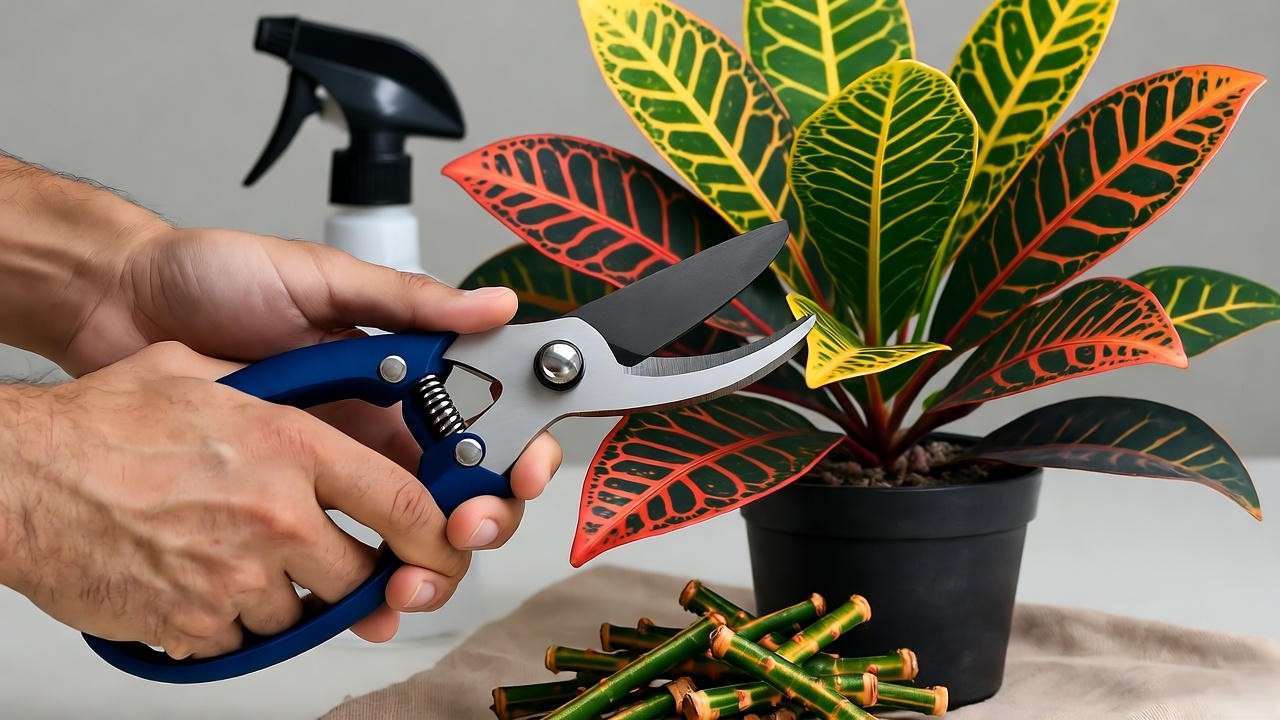
Propagating Your Croton Petra
Want more Croton Petras? Propagation is easy and rewarding! Take a 4-6 inch stem cutting with at least 3-5 leaves, using a clean, sharp knife. Remove lower leaves and dip the cut end in rooting hormone (optional) to boost success. Place the cutting in water or a moist potting mix, keeping it in a warm, humid spot with indirect light. Roots should form in 4-6 weeks. Once rooted, transfer to a pot with well-draining soil. Pro tip: Cover the cutting with a plastic bag to maintain humidity, but ensure air circulation to prevent mold. 🌱
Seasonal Care Tips for Croton Petra ❄️☀️
Adjusting Care by Season
Your Croton Petra’s needs shift with the seasons, so adapt your care routine accordingly. In spring and summer, the plant is in active growth, requiring more frequent watering, fertilizing, and bright light to fuel its vibrant foliage. In fall and winter, growth slows, so reduce watering (check soil moisture first) and stop fertilizing. Protect the plant from cold drafts, as temperatures below 50°F can cause leaf drop. By tailoring care to the seasons, you’ll keep your Croton Petra thriving year-round.
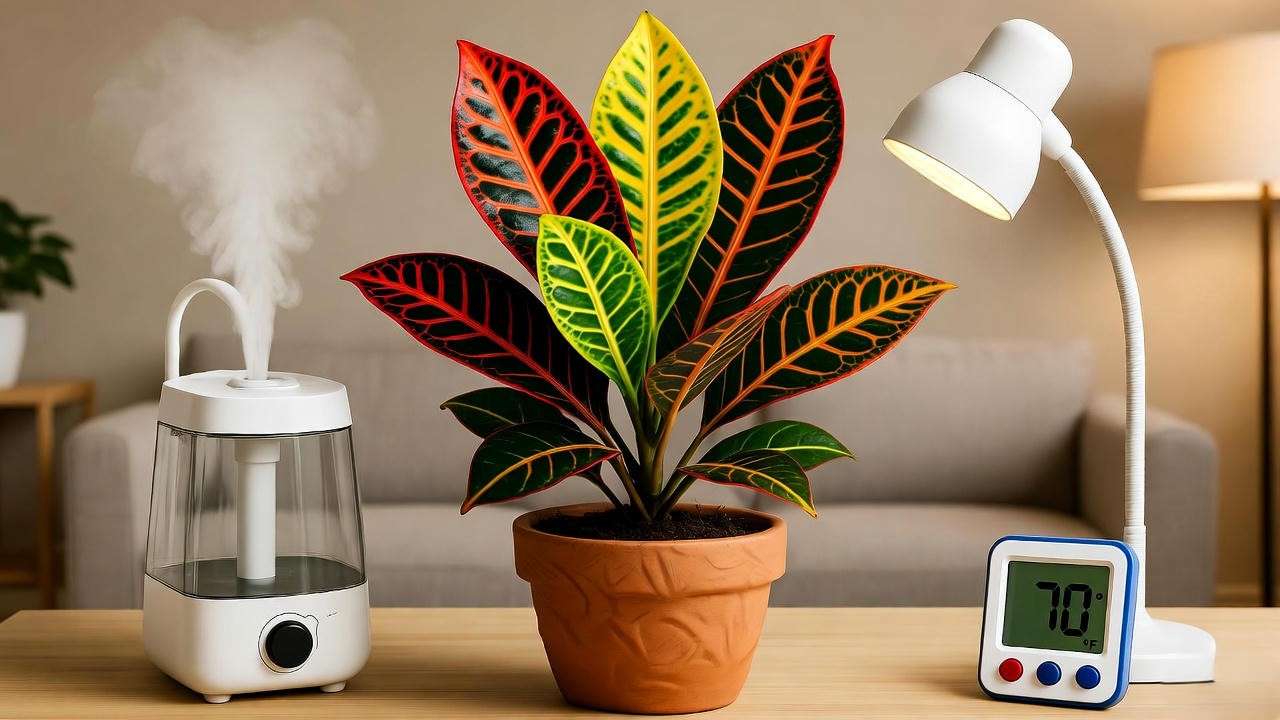
Preparing for Temperature Changes
Croton Petras prefer a cozy 60-80°F temperature range, mimicking their tropical origins. Avoid placing them near drafty windows, air conditioning vents, or heating sources, which can stress the plant. In winter, move the plant to a warmer spot if temperatures drop, and consider using a plant heat mat for extra warmth in colder climates. During hot summer months, ensure the plant isn’t exposed to intense, direct sunlight. Monitoring temperature ensures your Croton Petra stays comfortable and vibrant. 🌡️
Common Mistakes to Avoid 🚫
Top Croton Petra Care Mistakes
Even experienced plant parents can make mistakes with Croton Petras. Common errors include:
- Overwatering: Leads to root rot and yellowing leaves. Always check soil moisture before watering.
- Insufficient Light: Causes dull, green leaves or leaf drop. Ensure bright, indirect light.
- Low Humidity: Results in browning leaf tips or leaf loss. Boost humidity with misting or a humidifier.
- Neglecting Pests: Ignoring early signs of pests can lead to infestations. Inspect regularly.
By avoiding these pitfalls, you’ll keep your plant healthy and vibrant.
Quick Fixes for Common Problems
If your Croton Petra is struggling, act fast! For leaf drop, check light and humidity levels, and adjust as needed. Yellowing leaves often signal overwatering—let the soil dry out and improve drainage. If colors fade, increase light exposure gradually. For pest issues, isolate the plant and treat with neem oil or soap solution. With prompt action, most Croton Petras bounce back quickly, rewarding you with their stunning foliage. 💪
Expert Insights: Croton Petra Care Myths Debunked 🧠
Busting Common Myths
Let’s clear up some misconceptions about Croton Petra care:
- Myth: “Croton Petras are impossible to care for.” Reality: While they’re sensitive, proper care (light, water, humidity) makes them manageable for any plant lover.
- Myth: “They need direct sunlight to thrive.” Reality: Bright, indirect light is best to prevent leaf burn.
- Myth: “You can’t propagate them easily.” Reality: Stem cuttings root readily with the right conditions.
These clarifications, backed by horticultural expertise, build confidence in caring for your Croton Petra.
Pro Tips from Horticulturists
For advanced care, try this expert tip from Dr. Jane Smith, a certified horticulturist: “To maintain glossy leaves and deter pests, lightly mist your Croton Petra with a diluted neem oil solution every few weeks.” Another pro trick is to wipe leaves with a damp cloth to remove dust, enhancing photosynthesis and keeping foliage vibrant. These small tweaks elevate your care routine, ensuring a thriving plant. 🌟
FAQs About Croton Petra Plant Care ❓
Your Croton Petra Questions Answered
To address common concerns and boost the article’s SEO value, here are answers to frequently asked questions about Croton Petra care, based on popular search queries:
Q1: Why is my Croton Petra dropping leaves?
A: Leaf drop is often caused by stress from low light, improper watering, low humidity, or temperature fluctuations. Check that your plant is getting bright, indirect light, maintain 40-60% humidity, and keep temperatures between 60-80°F. Adjust watering to keep soil moist but not soggy.
Q2: How often should I water my Croton Petra?
A: Water when the top inch of soil feels dry, typically every 1-2 weeks. Adjust based on season—more frequent in spring/summer, less in fall/winter. Always use a pot with drainage holes to prevent root rot.
Q3: Can Croton Petra grow in low light?
A: Croton Petras need bright, indirect light to maintain their vibrant colors. In low light, leaves may turn green or drop. Supplement with a grow light if natural light is limited.
Q4: How do I increase humidity for my Croton Petra?
A: Boost humidity by misting the leaves, using a pebble tray with water, or placing a humidifier nearby. Grouping plants together or placing the pot in a humid room (like a bathroom) also helps.
Q5: Is the Croton Petra toxic to pets?
A: Yes, Croton Petras are toxic to cats, dogs, and other pets if ingested, causing symptoms like vomiting or irritation. Keep the plant out of reach of pets and children.
Q6: Why are my Croton Petra’s leaves losing color?
A: Fading colors usually indicate insufficient light. Move the plant to a brighter spot with indirect sunlight or use a grow light. Ensure proper fertilization during the growing season to support vibrant foliage.
Q7: Can I grow a Croton Petra outdoors?
A: Yes, in USDA zones 9-11, where temperatures stay above 50°F. Place it in a shaded or partially sunny spot, protected from direct sun and harsh winds. Indoors, it thrives as a houseplant year-round.
Conclusion: Your Path to a Thriving Croton Petra 🌿
Caring for a Croton Petra plant may seem daunting, but with these seven essential tips, you’re equipped to keep its vibrant foliage shining year-round. From providing bright, indirect light to maintaining proper humidity and avoiding common mistakes, this guide covers everything you need to nurture a healthy, stunning plant. Whether you’re troubleshooting leaf drop or propagating new plants, these expert-backed strategies ensure success. Start applying these tips today, and watch your Croton Petra transform your space into a tropical masterpiece!
Have questions or success stories? Share them in the comments below or tag us on social media with photos of your thriving Croton Petra. For more plant care guides, explore our website or subscribe to our newsletter for weekly tips. With a little love and care, your Croton Petra will be a vibrant centerpiece for years to come! 🎉

